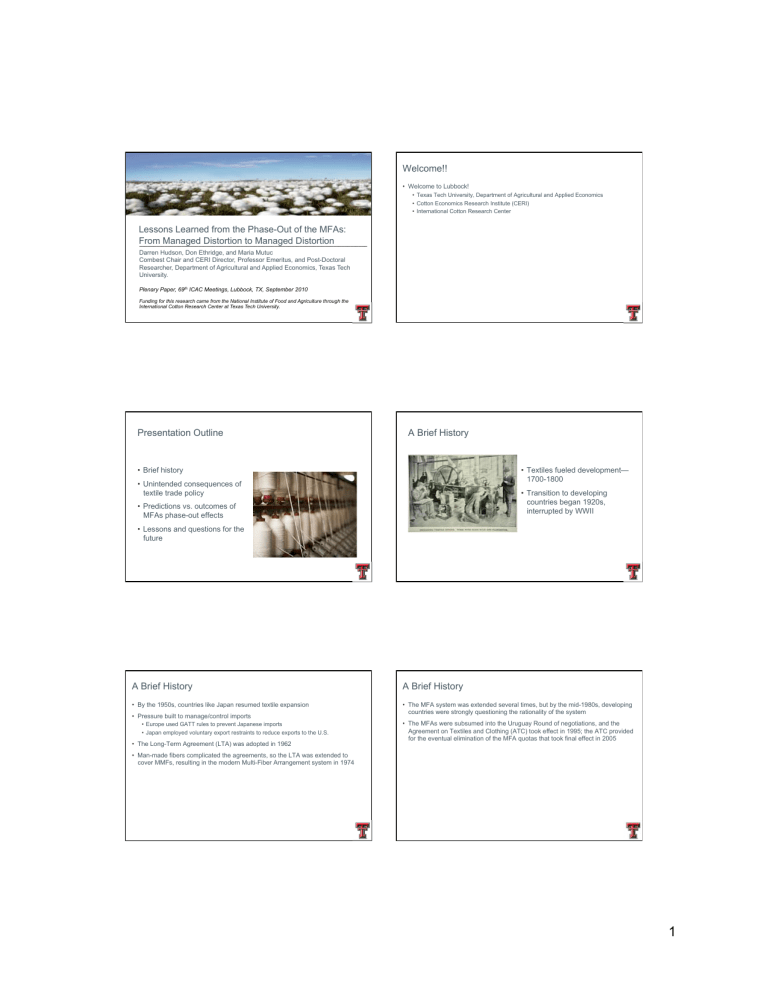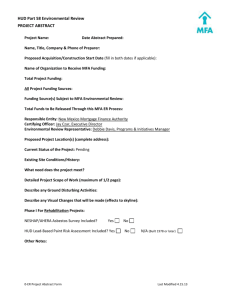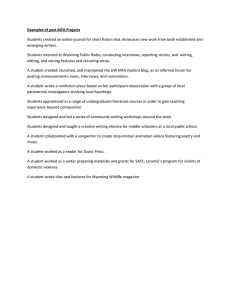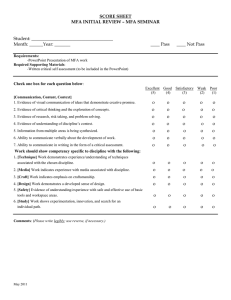Welcome!! Presentation Outline A Brief History A Brief History A Brief

Lessons Learned from the Phase-Out of the MFAs:
Darren Hudson, Don Ethridge, and Maria Mutuc
Combest Chair and CERI Director, Professor Emeritus, and Post-Doctoral
Researcher, Department of Agricultural and Applied Economics, Texas Tech
University.
Plenary Paper, 69 th ICAC Meetings, Lubbock, TX, September 2010
Funding for this research came from the National Institute of Food and Agriculture through the
International Cotton Research Center at Texas Tech University.
Welcome!!
• Welcome to Lubbock!
• Texas Tech University, Department of Agricultural and Applied Economics
• Cotton Economics Research Institute (CERI)
• International Cotton Research Center
Presentation Outline
• Brief history
• Unintended consequences of textile trade policy
• Predictions vs. outcomes of
MFAs phase-out effects
• Lessons and questions for the future
A Brief History
• Textiles fueled development—
1700-1800
• Transition to developing countries began 1920s, interrupted by WWII
A Brief History
• By the 1950s, countries like Japan resumed textile expansion
• Pressure built to manage/control imports
• Europe used GATT rules to prevent Japanese imports
• Japan employed voluntary export restraints to reduce exports to the U.S.
• The Long-Term Agreement (LTA) was adopted in 1962
• Man-made fibers complicated the agreements, so the LTA was extended to cover MMFs, resulting in the modern Multi-Fiber Arrangement system in 1974
A Brief History
• The MFA system was extended several times, but by the mid-1980s, developing countries were strongly questioning the rationality of the system
• The MFAs were subsumed into the Uruguay Round of negotiations, and the
Agreement on Textiles and Clothing (ATC) took effect in 1995; the ATC provided for the eventual elimination of the MFA quotas that took final effect in 2005
1
Unintended Consequences
• “Quota-hopping”
• Investment in places with no real comparative advantage
• Transshipment and false declarations of origination
Classification of Exporting Countries
1.
Countries with vertically integrated production in both textiles and clothing
• China and India
2.
Countries that have limited capacity in both textiles and clothing
• Pakistan, Thailand, Vietnam
3.
Middle-income countries that have mainly clothing capability
• Sri Lanka and the Philippines
4.
Least-developed countries
• Bangladesh, Cambodia, Nepal
• The first category appears to be the group with the necessary cash to benefit from MFA removal, while the others have less potential to benefit
• Of course, the normal factors of costs and labor availability play a role in determining the location of production
MFA Elimination—Projections and Outcomes
• Presumed to be a net benefit—assuming global trading system was based on free trade principles
• MFA elimination has not ended trade restrictions—merely eliminated bilateral quotas
• Most models accurately projected the direction of T&C flow pattern changes for major importers (U.S. and E.U.) and major exporters (China and India)
• Generally, volume changes and aggregate changes have been less dramatic than anticipated
MFA Elimination—Projections and Outcomes
• Disaggregated view (country-by-country) shows that trade flow shifts were less dramatic than anticipated
• Anticipation of changes?
• China and India “quota-hopping”?
• Several developing countries (e.g., Bangladesh and Cambodia) increased exports in spite of a priori expectation
Developing Country Success
• What has caused some of these developing countries to succeed where it would have otherwise been expected:
• Foreign direct investment—capitalized on preferential trading in the aftermath of the
MFA?
• Benefitted from the MFA and now having to use direct and indirect subsidies to keep their inefficient textile industries afloat?
• Phase-out of the MFA allowed countries with a natural comparative advantage to flourish?
MFA Phase-Out and Trade Growth
• Rapid expansion after 2002
—high valued quotas eliminated
• Slower rate of growth after
2005
• Almost flat growth in
2007-2008 period
Index of Trade Value Growth
2
Why Slower-Than-Anticipated Growth after 2005?
• Special safeguards against China
• Tariffs and preferential trading arrangements
• Government support to T&C industries
Government support
China (not featured here) provides numerous subsidies at different levels that include cash grant rewards for exporting, preferential loans to exports, debt forgiveness, payments to lower the cost of export credit insurance, VAT rebates, and preferential duties on parts needs for manufacturing and R&D.
Conclusions
• Are we any closer to free T&C trade than we were before the phase-out of the
MFAs?
• Supply side—misaligned incentives have given rise to a production system not necessarily based on comparative advantage
• Demand side—major importers not managing trade on bilateral basis, but elimination of quotas replaced by other non-tariff barriers
• “Market power” has shifted from the major importers to the major exporters
Conclusions
• Trading scheme has moved from a bilaterally manage trade to another managed trading scheme sanctioned by the WTO.
• Preferential treatment of developing countries has led to a new set of distortions under the guise of “liberalized” trade
• For the Doha Round, the lesson of the MFAs is the convolution of the objectives of trade barrier reduction and “development” will likely lead to contentions, unsuccessful negotiations
3


